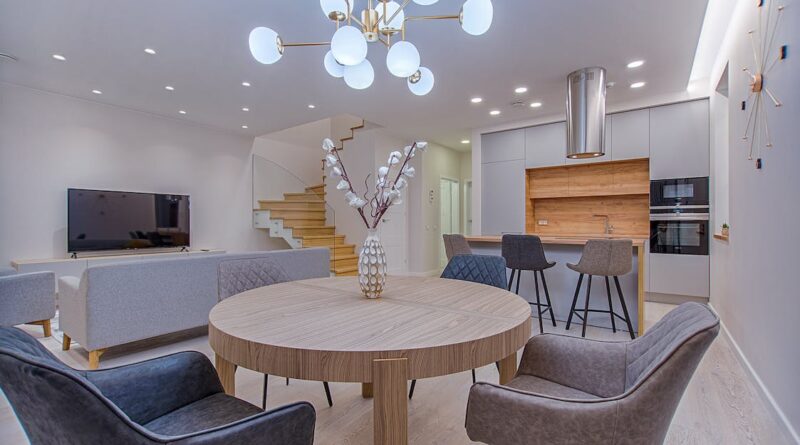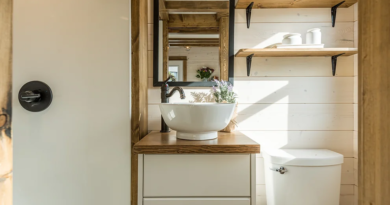Things to Consider in Choosing the Right Lighting for Your Home
Lighting is one of the numerous components that make up your home’s interior, and is deemed as one of the most important aspects. It is actually an essential layer of your interior design that is frequently disregarded in favor of the more visually appealing elements like the color scheme, furniture, and accessories. Lighting not only brings your house to life, but also plays a significant role in how people experience a space. And no matter how lovely your home is, without the right lighting, nothing will be seen. Given that most people are aware of how right lighting is needed for designing a room that is both lovely and useful, manufacturers have created multiple options for people to choose from.
Choosing the right lighting for you and the environment takes a lot of time and effort. For instance, you must ensure that the lights you select have a practical purpose, provide the appropriate quantity of light, and have a decorative aspect that enhances the aesthetic of the space. A basic, contemporary ceiling light will not look right in a room filled with antique furniture.
Also, the process of choosing lighting for a space involves several diverse, important considerations. People must take the following factors into consideration when choosing lighting — the intended use, the quantity and quality of the light, the type of fixture, and if it is a decorative fixture. And because the aim is to give the spaces aesthetic comfort, these standards are applied to every project manufacturers work on.
Choosing the right lighting for your home’s many rooms can be challenging at times. There are so many lights—bright lights, soft lights, hanging lights, wall lights, chandelier lights, and LED lights. You will actually know exactly what is meant on this if you have ever been to a store that sells lights. Thus, it is important to take these things listed below into consideration, so you will be able to integrate the right lighting perfect for an area of your home.
Overall Theme
Before you start thinking about the type of lighting you should get, you must decide on the concept or aesthetic you want for your home. You can choose from a variety of design styles, such as rustic, contemporary, mid-century modern, Scandinavian, Bohemian, industrial, and more. Finding lighting solutions that go with your chosen theme will be a lot simpler once you have decided on one for your home.
If you are trying for a rustic look, for example, your floor lamps and other lighting fixtures can be made of vintage-style wood rather than sparkling metals and glass. Your interiors can be made to appear better overall by using lighting fixtures that go well with your home’s design approach.
Incorporate Layers of Lighting
It’s crucial to take the different levels of lighting into account when planning a space. This entails including lighting, above fixtures, and sometimes even dimmers in a single area. These diverse lighting levels are crucial because they minimize the room’s dark corners and give the space a cozy, warm feeling rather than a harsh one.
Additionally, there are several lighting options available — ambient, task, and accent lighting. Every room often has two different types of lighting, although this is not always the case. Sometimes a room will have all three. Which sort you require will depend on the size and style of your space. In order to adequately illuminate a room, you generally need at least two layers. Sometimes all it takes to significantly improve your home’s lighting quality is to just add another layer of light.
Ambient Lighting
Ambient lighting is typically the main source of light in a room. They could be recessed lighting or above fixtures. This kind of lighting actually provides a comfortable overall amount of light. The best place to start when lighting a room is, in fact, with ambient light sources, which are often above lighting such as ceiling light fixtures. Ceiling fans, chandeliers, flush mount or semi-flush mount ceiling lights, pendants, recessed lighting, torchiere lamps, track lighting, vanity lighting, and wall sconces are additional ambient light sources to take into account for your lighting design.
Task Lighting
The bright, direct light required for detailed work, such as reading a book or doing makeup in front of a mirror, is provided by task lighting, which is utilized to provide light for specific activities. These lights are only ever used to illuminate a tiny portion of the room, never the full space.
Task lights come in all shapes and sizes. They can be placed within a mirror, fixed on the wall, or perched on a desk. Some of them can even swivel or rotate to position themselves at any angle and wherever you need them to be. Desk lamps, island or mini pendants, track lighting, under cabinet lighting, vanity lighting, and work lamps are additional sources to take into account for your lighting design.
Accent Lighting
The most aesthetically pleasing lighting in a space is accent lighting. These lights often highlight a room feature that you love, like a fireplace, bookshelf, or picture. In general, these lights draw attention to something so that all of your guests can see it. This kind of lighting can be understated and sophisticated, or it can be extravagant and avant-garde. Accent lights include lamps, sconces, and chandeliers.
Accent lighting enables you to draw attention to intriguing elements in your home’s interior design, like a painting or a mantel. It can also be used to supplement the room’s ambient illumination as a secondary light source. Accent lighting aids in illuminating areas of the space where ambient light is unable to reach, while ambient lighting primarily provides above lighting. Recessed lighting, track lighting, and wall sconces are accent lighting options to take into account for your lighting design.
Size and Proportion
Another important thing to consider when choosing the lighting for your home is whether the lighting is proportional to the size of the space. To better understand the direction of the light and to assess the proportion and harmony of the room, it is advised to obtain a scaled-down image of the lighting fixtures in your area. You must have the ideal amount of light in your home, so it is necessary for you to get the proportions to match the size of your space before you choose the right lighting.
Too little light will keep your house dark, while too much light will flood the room and overpower anything else you might want to draw attention to. Scaling is an important aspect of home lighting that is frequently disregarded in favor of the more visually appealing aspects like light color and fixture design.
You must also measure your available space. Measure the length and width of the room to make sure a ceiling fixture, especially a chandelier, is big enough for the space. The appropriate size for a light fixture can then be estimated by adding all of the values together and converting to inches.
Choose the Right Light Bulbs
Do not forget light bulbs. The lumens, wattage, and color temperature of the light in your space are all important factors to consider. In general, think about daylight color temperature for reading nooks and studies; warm white color temperature for living rooms and bedrooms; bright white color temperature for kitchens and offices. Finally, be aware that the items you buy from your neighborhood Home Depot can have a significant impact on the appearance and comfort of your house, as well as your energy expenditures.
Incandescent
The industry is beginning to phase out many incandescent bulbs since they are the least energy-efficient, given that a 60 Watt bulb only lasts around 750 hours, most similar to the sun, and offers warm light. This type of light bulb is most suitable for floor or table lamps, Type C or B chandeliers, or even kitchen pot lights.
Halogen
This type of light bulb provides a longer lifespan than a standard incandescent, is hot to the touch, uses more energy than a conventional halogen lamp, and emits warm light as well.
Fluorescent
Fluorescent light bulbs are energy-saving, but not as high-quality in terms of color rendering, giving off a cooler light, with less effective dimming and a longer on time. Fluorescents are typically more suitable for spaces where job or mood lighting is less critical; for example, garages, basements, hallways with low traffic, and the like.
LED
LED lights are quite on the expensive side, but they have the longest lifespans, save the most energy, and generally make colors look fantastic. The market is still developing, so there are a ton of amazing alternatives on the horizon.
Key Takeaway
In the process of choosing the right lighting for your home, it is essential to keep these factors in mind. By doing so, you can be able to provide the perfect lights for your home, emphasizing the beauty of your interior. Conduct the right amount of research, and you will certainly bring stunning lighting fixtures home that not only illuminate your room but also serve as decorative accents.



